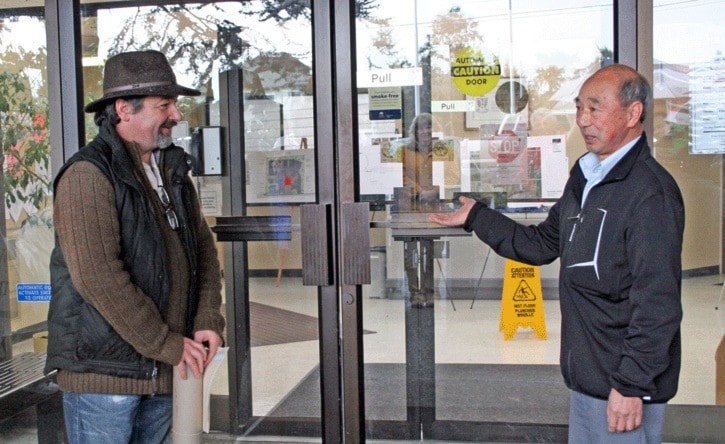The Creating Homefulness Society hopes to house more homeless, and create farmers on Woodwynn Farms.
Despite an email sent out Sunday that alluded to bureaucracy and bullying tactics, founder and executive director Richard LeBlanc was heard “inviting the local municipality to open their hearts” Monday morning at municipal hall.
“We cannot allow politics, bureaucracy and a few people resorting to bullying tactics, to continue to keep us from our humanity,” the email began. It went on to invite Woodwynn supporters to attend municipal hall March 14 as Leblanc handed over an application to rezone the property, to house the formerly homeless. “We’ve come a heck of a long way. It’s been a four-year journey for myself and a two-year journey for many of our volunteers and we’ve accomplished a lot. We celebrate that accomplishment here today by taking the project to the next steps,” Leblanc said. “We have shown how serious we are about farming the farm.”
They’ve grown a couple of acres of produce that is in transition to become organic, added livestock, installed deer fencing and pulled 13,000 bales of hay from the 193-acre plot of land.
“Simultaneously we have begun the therapeutic program for the participants in our project. We have trained our key staff, they’ve undergone about 100 hours of training. We have a lot of experience under our belts now and we’re seeing the results, and that’s actually the whole purpose of why we’re here, seeing people turn their lives around. It’s such an incredible honour to be witness to the folks doing that. It is our inspiration, it is what drives us,” Leblanc said.
The stated goals for 2011 at Woodwynn Farms are to house and apprentice 96 participants in the Therapeutic Community Program; grow produce on one of Vancouver Island’s largest farms, and keep the farm in the Agricultural Land Reserve; and have 2011 people donating 99 cents a day to help secure the financial future of the farm.
“We want to help far more people. It’s 200 acres and we only have four
people — a four person capacity at the moment. We have the makings of helping many, many, many hundreds,” LeBlanc said. “We’re coming here inviting the local municipality to open their hearts. We’re inviting mayor and council to consider our plan and to take a serious look at it and become partners with us in the process of helping people. Partners with us in the process of effectively farming that 200 acres as a showcase of how thing scan be done well.”
Central Saanich Mayor Jack Mar met the contingent at the door of the municipal hall.
“I will escort Richard downstairs and hand it to the planning department, that’s the process,” Mar said. “It will be vetted by the planning department, they would review it and they would make recommendations to council. In due process it would be forwarded to our council.”
In early 2008, the council previous to that sitting now in Central Saanich denied rezoning before seeing an official application. At the time, prior to purchase of the property, Leblanc presented the proposal for the therapeutic community during a planning and development committee meeting of council.
LeBlanc explained they hadn’t yet decided on the wording or zoning of any application the society would make to the district, but council saw the writing on the wall. Scale and permanency were critical points for council, such as construction of dwellings to accommodate more than 90 people and other permanent modifications to the historic farm.
“It’s pretty evident that the project does require institutional zoning,” said then-councillor Bob Thompson, chair of the Planning and Development Committee.
That former council repeatedly credited LeBlanc and his society for the concept, but made a motion that it wouldn’t support rezoning of the farm.
